How to plan Kailash Mansarovar Yatra 2025
The Kailash Mansarovar Yatra is a holy pilgrimage to Mount Kailash, The first of Panch Kailash abode of Lord Shiva and Goddess Parvati in the upper Himalayan region of Tibet(China).
Panch Kailash is a series of the five mountain peaks dedicated to Lord Shiva collectively known as Panch Kailash. Kailash Mansarovar is first, Adi Kailash is second, Shrikhand Mahadev is third, Kinner Kailash is Fourth, and ManiMahesh Kailash is Fifth.
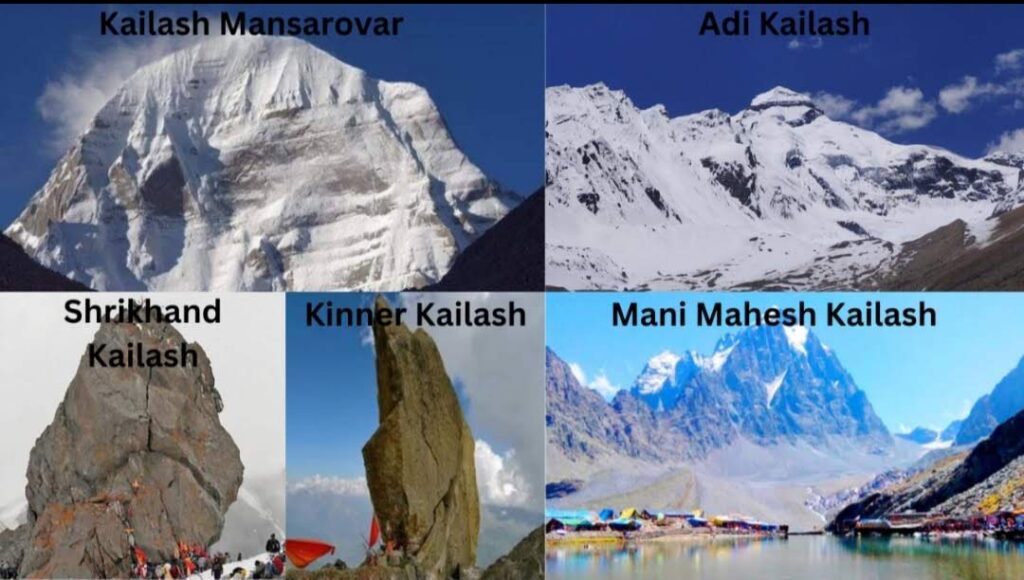
Kailash Mansarovar Yatra is sacred for four religions –
- Hindu – Hindus worship this mountain as the home of Lord Shiva and Mata Parvati.
- Jainism – Jain believes that the first Tirthankar, Rishbhdeva attained moksha here.
- Buddhist – Mount Kailash known as Mount Meru in Buddhism is the centre of Cosmology.
- Bon – It is believed that Bonism originated from the kingdom around Mount Kailash.
What is Kailash Mansarovar Yatra
Kailash Mansarovar Yatra is a pilgrimage focused on reaching and witnessing the glorious Mount Kailash, and Lake Mansarovar. Kailash Mansarovar Yatra is done in various stages by various routes and conveniences, the stages like bathing in Lake Mansarovar, visiting Yama Dwar, Ashtapada or Charan Sparsh and Kailash Parikrama or Kora (Parikrama or Kora is a long high-altitude trek around the Mount Kailash that takes upto 3 days.
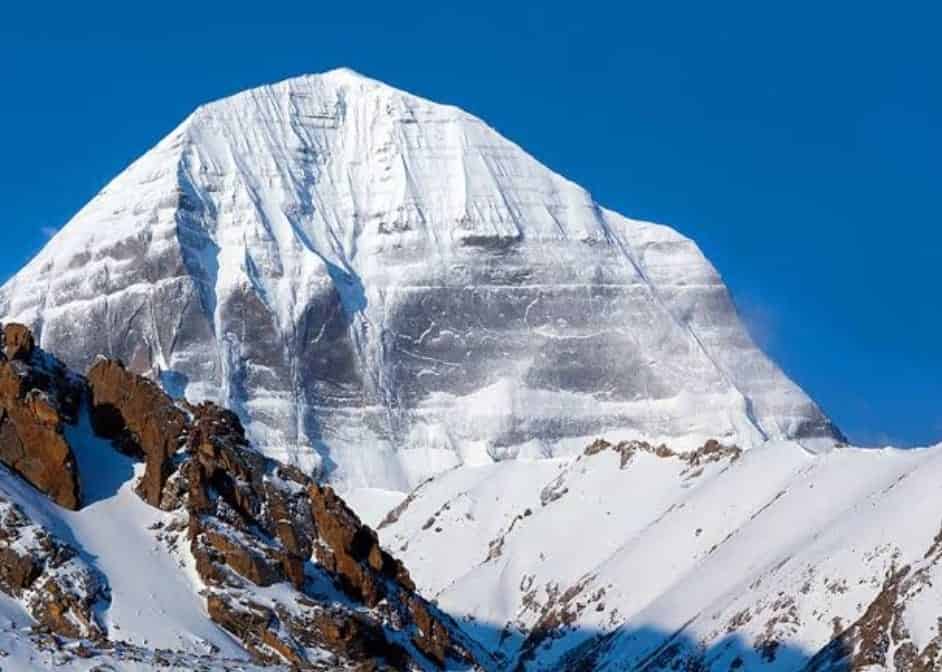
How to plan Kailash Mansarovar Yatra
To plan the Kailash Mansarovar Yatra is the same as how you plan a high-altitude spiritual trek. The Kailash Mansarovar Yatra is only different because it is situated in Tibet Mount Kailash is in a very remote area and that is why Kailash Mansarovar Yatra easily takes up to 10 to 15 days, we’ll share some important information so that you’ll be able to prepare yourself physically, mentally and make your itinerary accordingly.
Kailash Mansarovar Yatra opening
Kailash Mansarovar Yatra will be opening between 20 to 25 April 2025.
The highlights of Kailash Mansarovar Yatra
There are some unknown facts about Mount Kailash that you should know and places that can be defined as highlights of the Kailash Mansarovar Yatra which are explained below
What is Kailash Parikrama/Kora
Kailash Parikrama or Kailash Kora is a 52 km long holiest walk around Mount Kailash that is believed to be equivalent to taking a round of lord Shiva and Goddess Parvati. The Kailash Parikrama starts from Darchen(4575 meters) goes to Dirapuk(4900 meters), Dolma La pass(5630 meters), Zutulpuk, and gets back to Darchen in three days. There is an alternate route via Kuber Kund that avoids Dolma La pass. Some people who have some experience in trekking do this Kora in two days and local Tibetan people do this Kora in a single day.
There are two types of Parikrama or Kora the first is Outer Parikrama or Outer Kora, and the second is inner Parikrama/Kora.
What is Kailash outer parikrama
Kailash Parikrama is a trek around Mount Kailash that starts from Yama Dwar and ends at Darchen. Kailash outer Parikrama is a 52 km of trekking that takes around three days, sometime pilgrims take a day halt at Dirapuk(4900 meters) to do the Kailash Charan Sparsh trek which is a day trek to the feet of the holy Mount Kailash.
The first day of Kailash Parikrama – The Kailash Parikrama starts from Yama Dwar which is 6 kilometers driving towards Tarboche Valley also called the Valley of God from Darchen. Some pilgrims walk even this 6 km from Darchen to Yama Dwar. You can hire a horse and helper here that you will have to reserve in advance through your guide which will cost you around 900 to 1000 Chinese yuan for one day which is 2700 to 3000 Yuan for 3 days of Kailash Parikrama.
The first day is comparatively easy, trekking through the bank of the river from the Indus River valley and the north face of Mount Kailash. Only local tea houses are available on the way to buy water and have some tea, food, and famous Tibetan noodles. At Dirapuk (4900 meters) local guest houses will provide all the needed accommodation. The north face of Mount Kailash and Golden Kailash during sunset and sunrise from Dirapuk can be seen from here. Pilgrims can also have one extra day’s halt here to visit the Charansparsha (base of Mount Kailash) and return on the same day. This day hike to Charan Sparsh is called Kailash Inner Kora
The second day – The second day of Kailash Parikrama is quite challenging. It can be compared with some of the hardest mountain treks. Walking through a rocky way to reach the Dolma La (5645 meters) pass. Horses are not able to carry people on this rocky downhill path. You will have to walk by yourself. The second day ends at Juthulpuk (4700 meters).
The valley features stunning views of ice-covered hills, moraines, and the Dolma La pass adorned with large Tibetan prayer flags. Following the pass, the rocky valley hosts the sacred Gauri Kund and several lovely lakes. Today’s Parikrama involves 10 to 12 hours of walking, offering a panoramic view of the North face of Kailash, while the eastern face is visible en route to Juthulpuk, although Mount Kailash itself cannot be seen from Juthulpuk.
The valley offers incredible views of ice-covered hills, moraines, and Dolma La pass with huge Tibetan prayer flags. Right after the pass, the beautiful rocky valley with Holy “GAURI KUND” along with other small beautiful lakes makes the area unimaginable. The whole Parikrama day today is about 10 to 12 hours of walking. The view of the North face of Kailash is panoramic with other mountain hills. The eastern face of Kailash can be seen today on the way to Juthulpuk, but Mount Kailash is not visible from Juthulpuk
The third day – The third day of Kailash Kora is the easiest of the whole Parikrama. It is about 3 hours walking on totally flat land to reach up to the driving station. Walking through beautiful Juthulpuk valley, Big grassland grazing fields with yaks and ships can be seen on the way. Nomad tent houses and their lifestyle can be seen. The fourth and last face of Mount Kailash’s eastern face is visible if the weather is clear. Kailash Parikrama or Kailash Kora is not so hard if your body is fit at a high altitude and has a habit of walking/ trekking.
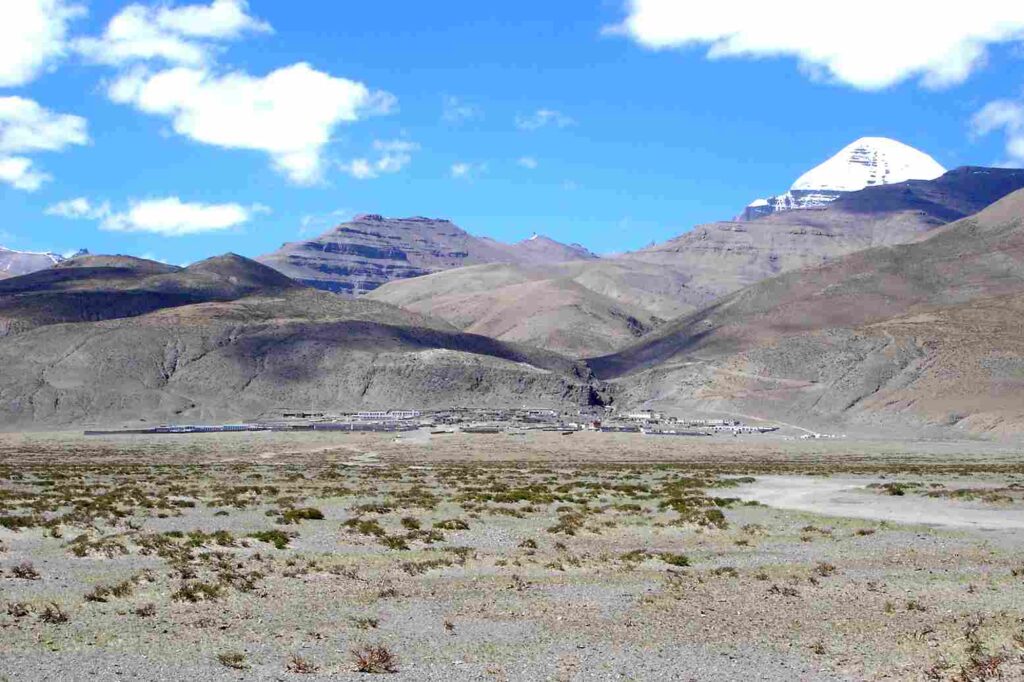
Things to consider during Kailash Parikrama
- The horses here are not trained These are kind of wild horses, and they have to be treated very carefully while riding.
- It is suggested that you do not stay for more than 10 minutes at the Dolma La pass top. Once you reach there, immediately walk down to the low altitude.
- Every pilgrim needs to drink at least 3 to 4 liters of water every day to avoid acute mountain sickness.
- If anyone feels a sudden headache, nausea, stomach ache, rise in heartbeat rate, abnormal sweating, and unusual bloating or gastric contact your tour guide immediately as these are the signs of AMS(acute mountain sickness).
What is Kailash inner parikrama
As we know there are two types of Kailash Parikrama the first is outer and the second is inner Parikrama. Pilgrims who are not willing or cannot do the whole 52 km trek, or who are prone to AMS and cannot tolerate the high altitude, can opt for this inner Parikrama which is a single-day trek.
Kailash Inner Kora starts from Dirapuk(4900 meters) and goes to Mount Kailash where pilgrims touch the feet of Mount Kailash and come back to Dirapuk and come back to Darchen.
What is nandi parikrama
Kailash’s inner Parikrama/Kora is called “NANDI” Parikrama. Nandi is a Bull who is believed to be the VAAHAN of lord Shiva, a true devotee and companion of lord Shiva.
Kailash’s outer Parikrama or Kora offers views of Mount Kailash from every direction while doing the 52 km long trek over three days around Mount Kailash but Kailash inner Parikrama or inner Kora offers the opportunity to touch the feet of Mount Kailash which is considered to be the equivalent to touch the lord Shiva’s feet that denotes the importance of Nandi and Nandi Parikrama.
What is Kailash Mansarovar Yatra Charan Sparsh
In Kailash Mansarovar Yatra there is a short Kora for Ashtapada where pilgrims touch Mount Kailash’s feer which is called Charan Sparsh.
There are two types of Parikrama or Kora in Kailash Mansarovar Yatra Outer and Inner Parikrama the inner Parikrama also known as Nandi Parikrama goes directly to Mount Kailash’s feet which is called Ashtapada and the ritual of touching Mount Kailash’s feet which is believed to be the equivalent of touching the feet of lord Shiva is called Kailash Mansarovar Yatra Charan Sparsh.
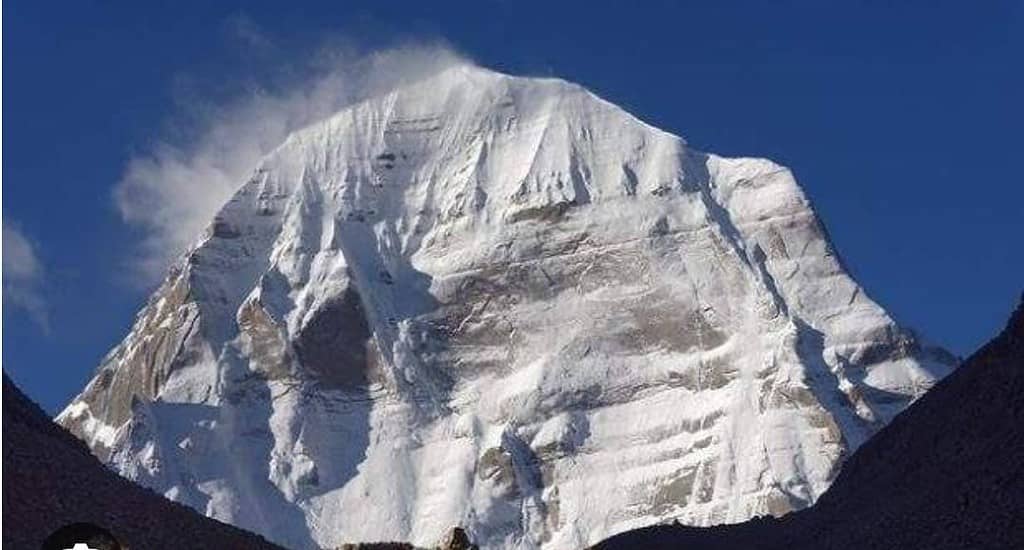
What is Lake Mansarovar
Lake Mansarovar is a natural freshwater lake alongside Mount Kailash. Lake Mansarovar is one of the Highest freshwater lakes in the world at a staggering height of 14948 feet above sea level.
Lake Mansarovar also known as Mansarovar taal is believed to be made by Devtas(Lords of Heaven). Mansarovar is a freshwater lake at a height of almost 15000 feet above sea level, the water in Mansarovar Lake remains calm in any given weather condition.
For a long time, pilgrims who visit Mount Kailash have the tradition of bathing in Lake Mansarovar before going to Mount Kailash to get the blessings of Lord Shiva, but the Chinese government has prohibited dip bathing in Kailash Mansarovar to keep the Lake clean but you can take out a bucket of water and bath in Lake Mansarovar water.
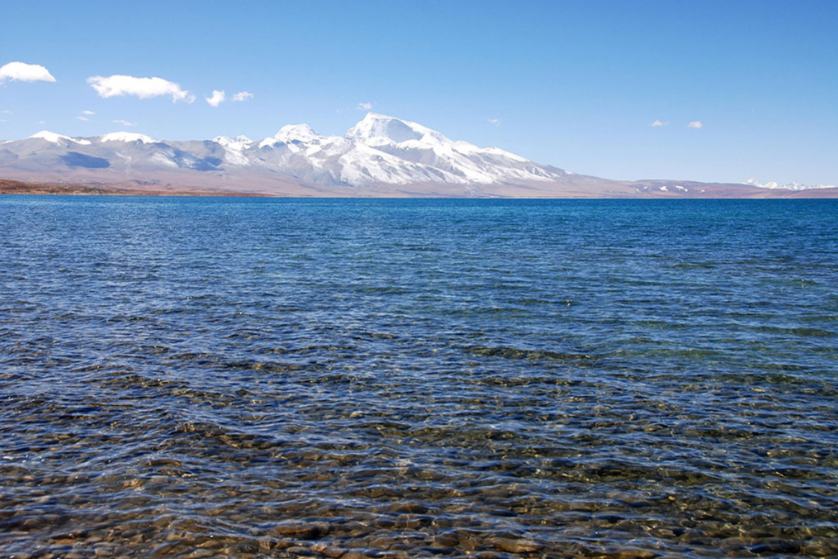
What is Rakshas taal
Rakshas taal is believed to be made by Ravan himself(Yes the same Ravan, ruler of Lanka who was killed By Lord Ram). Ravan was a great devotee of lord Shiva and visited Kailash Mansarovar regularly. When he found that Devtas had made a lake beside Mount Kailash then he also made a saltwater lake west of Lake Mansarovar at the height of 15010 feet above sea level to please Lord Shiva and to show his superiority and establish his dominance over the Devtas.
There is a major difference between Lake Mansarovar or Mansarovar Taal and Rakshas Taal that both lakes are natural and very close to each other but one is fresh water and another is saltwater. The water in Lake Mansarovar remains still and quiet even in the blizzards and thunderstorms whereas the water of Rakshas Taal always has big waves and storm-like conditions. Although both Lakes are situated very close to each other but have quite opposite behaviour.
What is Yama Dwar
The Yama Dwar in Mount Kailash is a small temple dedicated to Yama dev or Yamaraj (God of Death) in Tarboche Valley. The Yama Dwar is considered the starting point of Kailash Parikrama which is a small temple shaped like a Gateway.
Yama Dwar is small but holds so much importance in the Hindu Dharma that Hindu believes that if a person bath in Lake Mansarovar and goes through the Yama Dwar temple then Lord Shiva forgives all the sins of that person and after completing the Kailash Parikrama that person can attain “MOKSHA”.
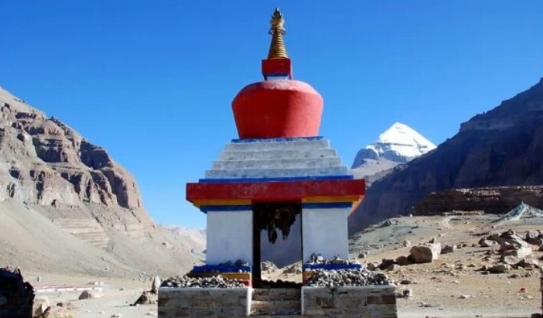
What is Golden Kailash
In Dirakpu during Kailash Parikrama Mount Kailash looks Golden at Sunrise and Sunset because of the red rays of the sun mixed with white snow-covered peaks that create the phenomena that is called Golden Kailash.
Best time to visit Kailash Mansarovar Yatra
The best time to visit Kailash Mansarovar is between August to September. Although the Kailash Mansarovar Yatra starts from the last of April to starting of May and stays open till October but the weather in August and September is quite good and offers favorable conditions to trek and the sky is usually clearer in comparison to May to July which is prone to have rain, snowfall and clouds that blocks the Mount Kailash view.
What to Pack for Kailash Mansarovar Yatra
Warm clothes, waterproof layers, and basic medicine are essentials what you pack for Kailash Mansarovar Yatra.
There are not so many things that you need to carry for the Kailash Mansarovar Yatra because Mount Kailash is in Tibet(China) and the Yatra is very long so you would have to book the Yatra with a tour company that will take care of every gadget, gear accommodation, transport, and food preparation so you won’t have to manage these things.
Although the Kailash Mansarovar Yatra is a high-altitude pilgrimage you may need some things like:-
- One or two good Warm Jacket (some travel organisers may provide jackets)
- A Good quality pair of trekking shoes.
- Thermals and layerings.
- Rain gear.
- Warm cap.
- Gloves.
- Scarf.
- A hat.
- Water bottle.
- Goggles for snow blindness protection.
- 5 or 6 pairs of socks (2 Warm for night and 3 to 4 normal for trekking).
- Waterproof slippers for the night.
- Petroleum jelly and lip balm.
- Basic medicine if you are on any type of medication.
- Documents.
Kailash Mansarovar Yatra registration and permit
Foreign travelers and pilgrims who wish to take a journey to this magical Kailash Mansarovar Yatra require a valid China Group Visa and Tibet Travel Permit. After the necessary paperwork through the legal travel agency or company, they will apply it on your behalf based on your reservation for the Kailash Mansarovar Yatra through them. It takes 3 to 4 working days from the application period. Besides that, you need other regional travel permits and entry tickets to enter Mt. Kailash for Sacred Walk Kora/Parikrama. You get a group visa and travel permit on paper which is valid until your Kailash journeys. You can’t extend this group visa individually while you are in Kailash Mansarovar Yatra.
How Difficult is Kailash Mansarovar Yatra
Kailash Mansarovar Yatra is moderately difficult, it is not easy but not so hard either. It is a high-altitude place and trek going up to 5645 meters above sea level at Dolma la pass, and the outer Parikrama is a 52 km long trek that may pose problems for people who cannot tolerate the high altitude or cannot walk long distances.
How to prepare for Kailash Mansarovar yatra
The Kailash Mansarovar Yatra and Kailash Parikrama/Kora trek is a difficult high-altitude trek, with high altitudes and long stretches. So it is recommended that you should prepare accordingly. You should start the physical exercise at least 3 months before your Kailash Mansarovar Yatra.
Here are some basic exercises that will be helpful.
- Start jogging at least 2 to 3 months prior. Benchmark is 5 km in 25 minutes.
- Keep an eye on your cardiovascular health and breathing and try to regulate them.
- Do some strength training as well, because you would have to carry your basic luggage(water, rain gear, basic medicine, phone or camera maybe). Strength training like squats, plank, and pushups.
- Stretching the hamstrings, quadriceps, back, and shoulder regularly can prevent strain and sprain on the trek due to the long distances.
Kailash Mansarovar weather
The weather in Kailash Mansarovar is comparatively cold due to the high altitude and due to the close position of Mount Kailash to the north and away from the equator.
The temperature of the region of Mount Kailash between May to July is around 8 to 18 degrees Celsius which can drop to 5 degrees at night during rain.
The temperature of the Mount Kailash region between August to September is the most pleasant, during this time this area doesn’t get much rain because it is a desert area thus the humidity is quite low and the temperature is 10 to 22 degrees Celsius, the clear sky offers better views and lesser snow which is better to walk on than the April, May, and June when the snow of the previous season is still there which poses so much trouble when walking on it.
Is Kailash the center of the earth
Kailash is believed to be the center of the earth because there are so many mysteries, stories, folk tales, and legends around or related to Mount Kailash.
Buddhists believe that Mount Kailash known as Mount Meru in the Buddhist community is the center of cosmology. Mount Kailash is sacred to four communities such as Hindus, Jains, Buddhism, and Bonism. Mount Kailash is also an undefeated mountain and there are so many people who observed that time runs faster on Mount Kailash.
Mount Kailash is exactly 6666 km away from the North Pole and 13332 km away from the South Pole which is exactly twice the distance from the North Pole.
These are some of the so many reasons why Kailash is considered the center of the Earth.
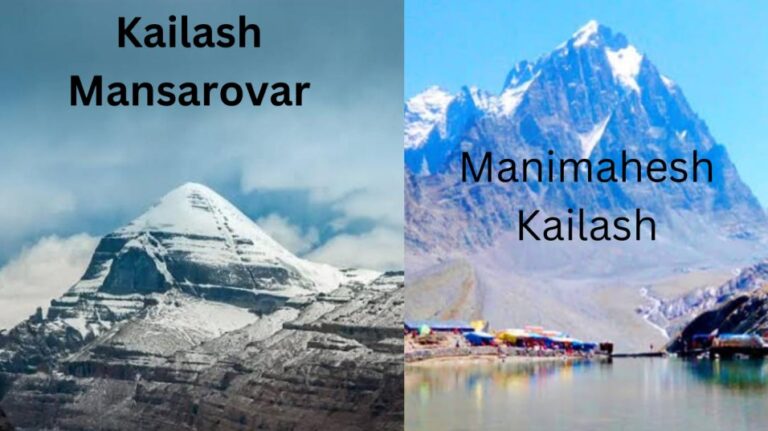



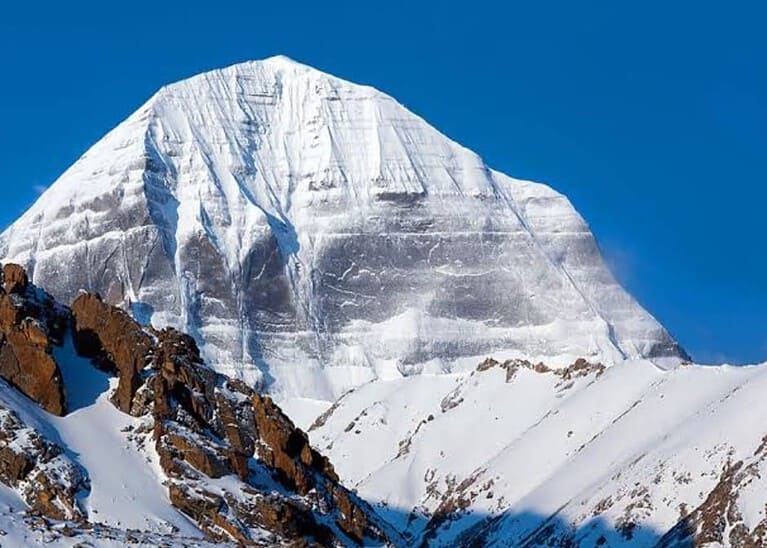
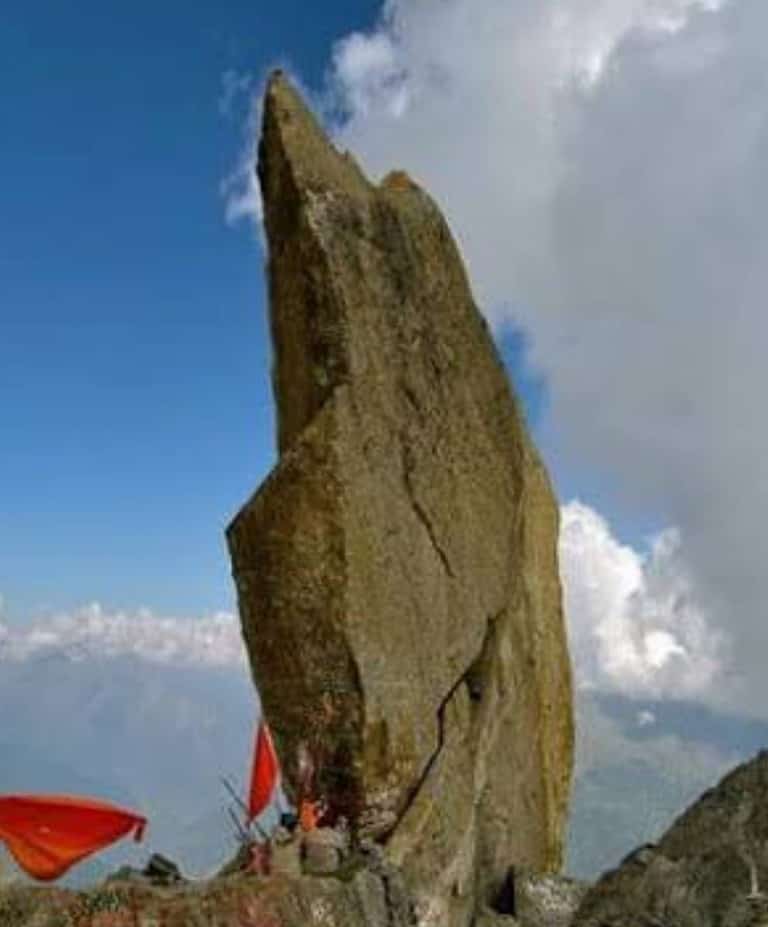
8 Comments